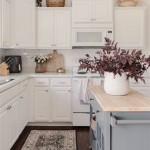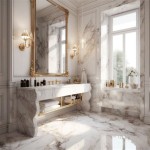How To Decorate A Living Room With Red Carpets
Decorating a living room with a red carpet presents both a challenge and an opportunity. Red, by its very nature, is a dominant color, associated with passion, energy, and boldness. It can transform the ambiance of a space, creating a focal point that commands attention. Successfully integrating a red carpet requires careful consideration of complementary colors, furniture styles, lighting, and overall design principles. This article explores various strategies for achieving a harmonious and aesthetically pleasing living room design centered around a red carpet.
The impact of a red carpet on a living room's atmosphere is significant. It instantly injects warmth and vibrancy, shifting the space away from neutrality. The shade of red itself plays a crucial role. A deep, rich crimson conveys sophistication and luxury, while a brighter scarlet exudes playfulness and energy. Understanding the specific hue of red in the carpet is paramount when selecting other design elements.
Before embarking on the decorating process, it's essential to assess the existing architectural features of the room. The size of the room, the amount of natural light, and the existing wall color will all influence the design choices. A small room might benefit from a lighter shade of red to avoid feeling overly confined, while a large room can handle a bolder, deeper tone. Similarly, a room with ample natural light can accommodate a more saturated red, whereas a room with limited natural light might require strategic lighting to prevent the carpet from appearing too dark.
Selecting a Complementary Color Palette
One of the most critical aspects of decorating with a red carpet is choosing a complementary color palette. The goal is to create a balanced and visually appealing space, preventing the red carpet from overwhelming the other elements in the room. Several color combinations work well with red, each offering a distinct aesthetic.
Neutral Tones: Pairing a red carpet with neutral tones like beige, gray, cream, or white is a classic and reliable approach. These colors provide a calming backdrop that allows the red carpet to shine without competing for attention. Neutral walls, sofas, and accent pieces create a sense of spaciousness and elegance. For example, a light gray sofa with white throw pillows and a beige area rug layered on top of the red carpet can create a sophisticated and balanced look. The key is to vary the textures within the neutral palette to add depth and interest.
Green Accents: Red and green are complementary colors on the color wheel, but using them together requires careful consideration. Too much green can create a jarring effect, particularly during holiday seasons. However, subtle green accents can beautifully complement a red carpet. This can be achieved through indoor plants, artwork featuring green elements, or small decorative items like cushions or vases. A muted sage green wall color can also provide a sophisticated backdrop for a red carpet.
Blue and Gray: Combining red with shades of blue and gray can create a more contemporary and sophisticated ambiance. A navy blue sofa paired with a red carpet offers a striking contrast, while lighter shades of blue, such as sky blue or powder blue, can create a more relaxed and airy feel. Gray, in its various shades, provides a versatile neutral that can soften the intensity of the red carpet. Incorporating blue and gray through artwork, textiles, and accessories can effectively balance the boldness of the red.
Gold and Brass Accents: Adding touches of gold or brass can enhance the luxurious feel of a red carpet. These metallic accents can be incorporated through lighting fixtures, picture frames, mirrors, or decorative objects. The warmth of gold and brass complements the vibrancy of red, creating a sense of opulence and sophistication. A gold-framed mirror or a brass coffee table can add a touch of glamour to the living room.
Choosing the Right Furniture Style
The style of furniture selected for a living room with a red carpet should align with the overall design aesthetic. Different furniture styles evoke distinct moods and complement the boldness of the red in different ways. The key is to choose furniture that enhances the carpet's impact without clashing with its inherent characteristics.
Modern and Minimalist: Clean lines, simple shapes, and a focus on functionality characterize modern and minimalist furniture. This style can effectively balance the boldness of a red carpet by providing a sense of restraint and order. A sleek white sofa, a glass coffee table, and minimalist artwork can create a sophisticated and uncluttered space. The absence of excessive ornamentation allows the red carpet to take center stage.
Traditional and Classic: Traditional furniture, with its ornate details and luxurious materials, can create a classic and elegant living room. Rich wood finishes, plush upholstery, and decorative accents complement the warmth and vibrancy of a red carpet. However, it's crucial to avoid overwhelming the space with too much detail. Choose pieces with refined silhouettes and elegant fabrics to maintain a sense of balance. A velvet armchair in a neutral color or a mahogany coffee table can enhance the traditional aesthetic.
Eclectic and Bohemian: An eclectic style offers the freedom to mix and match different furniture pieces and design elements. This approach requires careful curation to avoid creating a chaotic or disjointed look. Pairing a red carpet with vintage furniture, patterned textiles, and unique accessories can create a vibrant and personalized living room. Consider incorporating elements from different cultures and eras to create a truly eclectic space. A vintage rug layered on top of the red carpet, or a collection of colorful cushions can add visual interest.
Mid-Century Modern: Mid-century modern furniture, characterized by its clean lines, organic shapes, and use of natural materials, can create a stylish and comfortable living room. The simplicity of mid-century modern pieces allows the red carpet to stand out without being overshadowed. Consider incorporating pieces with wooden legs, tapered silhouettes, and minimalist upholstery. A walnut coffee table or a retro armchair can complement the red carpet while maintaining a sense of sophistication.
Utilizing Lighting to Enhance the Red Carpet
Lighting plays a crucial role in highlighting the beauty of a red carpet and creating the desired ambiance in the living room. Different types of lighting can emphasize different aspects of the carpet and influence the overall mood of the space. Strategic lighting can also address any challenges posed by the presence of a dominant color like red.
Natural Light: Maximizing natural light is essential for creating a bright and inviting living room. Large windows and skylights can flood the space with natural light, illuminating the red carpet and enhancing its vibrancy. Avoid blocking natural light with heavy curtains or blinds. Instead, opt for sheer curtains or blinds that allow light to filter through while providing privacy.
Ambient Lighting: Ambient lighting provides overall illumination to the room and creates a sense of warmth and comfort. This can be achieved through recessed lighting, chandeliers, or floor lamps. Dimmers allow for adjusting the intensity of the light to create different moods. Warm-toned light bulbs can enhance the warmth of the red carpet, while cooler-toned light bulbs can create a more contemporary feel.
Task Lighting: Task lighting provides focused illumination for specific activities, such as reading or working. Table lamps and floor lamps with adjustable arms are ideal for task lighting. Position task lighting strategically to avoid glare or shadows. Consider using lamps with shades that complement the color palette of the living room.
Accent Lighting: Accent lighting is used to highlight specific features of the room, such as artwork, architectural details, or the red carpet itself. Spotlights or track lighting can be used to draw attention to specific areas of the carpet. Consider using colored light bulbs to enhance the vibrancy of the red or to create a different mood.
In summary, decorating a living room with a red carpet necessitates careful planning and execution. By selecting a complementary color palette, choosing the right furniture style, and utilizing strategic lighting, it is possible to create a harmonious and visually appealing space that celebrates the warmth, energy, and boldness of the red carpet.

Red Carpet Living Room Designs 50 Rooms With Flooring Photos This Eous Livin Decor Black

Incorporating Red Into Your Interior Decor Cyrus Rugs

18 Vibrant Red Living Room Decor Ideas Rugs Direct

18 Vibrant Red Living Room Decor Ideas Rugs Direct

Red Rug And Wall To Carpeting Design Trend The Strategist

Persian Red Rugs And Carpets Decorating Carpetship

18 Vibrant Red Living Room Decor Ideas Rugs Direct

Inspired By Rooms Decorated With Red The Room

18 Vibrant Red Living Room Decor Ideas Rugs Direct

18 Vibrant Red Living Room Decor Ideas Rugs Direct
Related Posts







